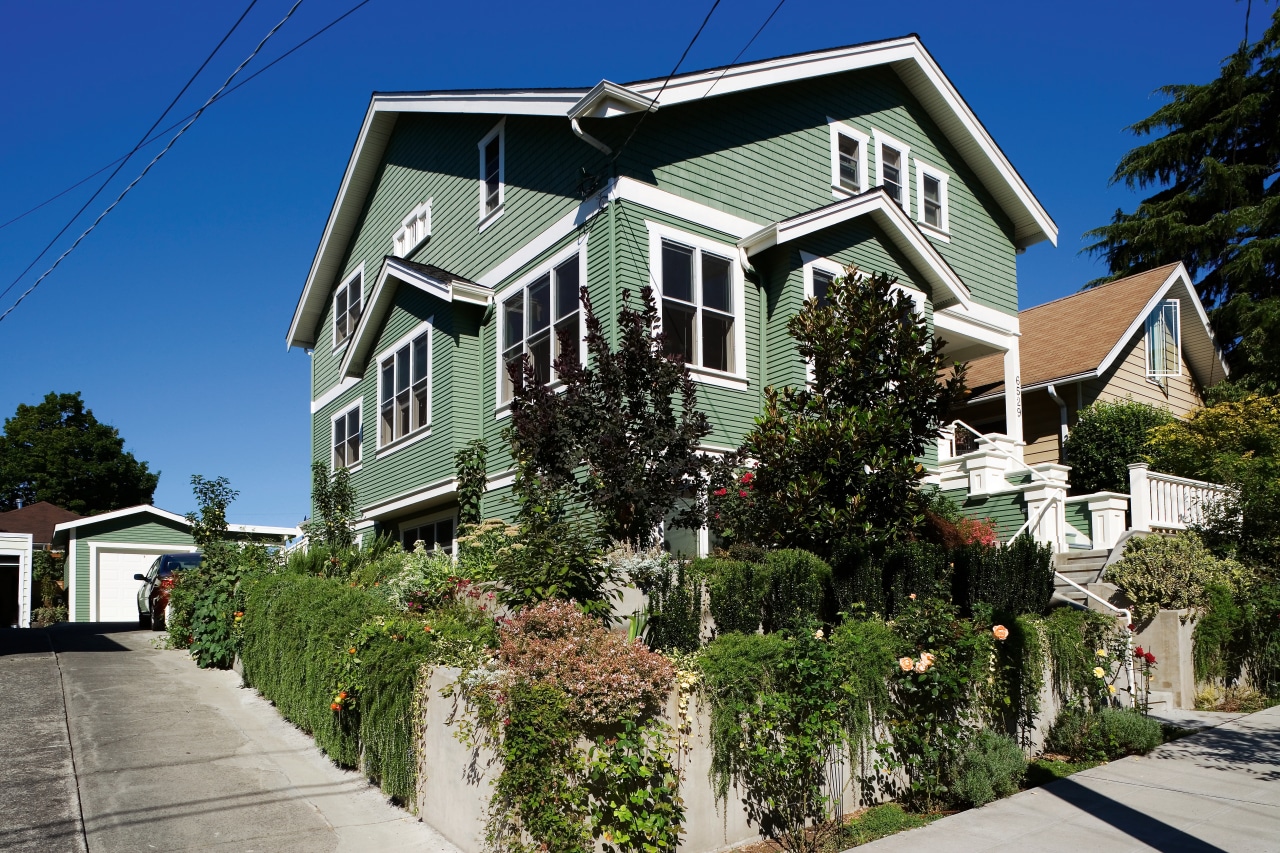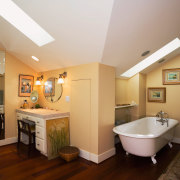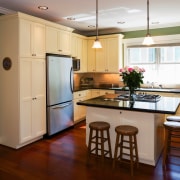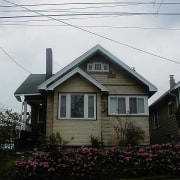Out of the ashes
A new home rises from the footprint of the old, merging the needs of today with the attention to detail of days gone by
There is something beguiling about getting your hands on an old, neglected home and returning it to its former glory, particularly if you plan to do the work yourself. Older homes, especially, have a quality of craftsmanship and attention to detail that appeals to those of us dissatisfied with the ready-made culture that is prevalent in newer houses.
There can be a downside though. Older homes can reveal a multitude of sins once the remodeling process begins, as was the case with the home featured on these pages, says Place Architects principal Heather Johnston.
"The house, built in 1910, hadn't been well taken care of and the structure itself was in quite a bad state of disrepair. Once the walls were opened up to begin remodeling, there was so much rot and decay that it was determined it was really a better decision to replace than to repair, which was when the owners contacted us."
Despite their obvious disappointment at having to demolish the structure, the owners were determined to remain faithful to the original.
"The new house is literally designed as a remodel of the original. The massing and footprint are the same so it's as if we'd just restored and opened up the first floor and added a second story. And yet, not even a full eight feet has been added to the overall height. The attic space of the original house meant the roof line was only about four to six feet shorter than the resulting finished building," says Johnston.

Homes from the early 1900s tend to be more compartmentalized, with dark, narrow hallways. For the remodel, the owners wanted to expand the existing home to allow more light and better support the needs of a modern family.
To achieve this, a visual corridor replaced the physical one between the family room and kitchen. The result is a series of rooms family room, dining room, and kitchen that, although separated from each other, have been opened up, flooding the whole first floor with abundant light.
One advantage of replacing rather than remodeling was being able to position all of the systems and supporting infrastructure such as internet and cable access, as well as heating and cooling, where they can best support the lifestyle of the owners, says Johnston.
"Building new is typically easier because you aren't so constrained by the existing structure and are not worried by what's lurking behind the few walls left standing. In this case though, because we were so determined to remain faithful to the original house, obviously there would have been an advantage to reworking the building."
Not all of the structure is new; several original details were salvaged and incorporated into the restored home. The three-part window that faced the street in the original home, along with its mullions and trim, was repositioned to the master suite. Additionally, the beadboard soffit from the underside of the eaves of the old house, entryway flooring, and crystal door knobs from the kitchen cabinets were all assimilated into the new design.
"This project really represented the best of both worlds. We were able to take from and tie into the spirit and language of detail of the pre-existing building, without being handicapped by difficult existing conditions," says Johnston.
As part of the owners' determination to recreate the Craftsman integrity inherent in the original dwelling, particular attention was paid to the detail work. The angled trim over doors and windows, the chair rails, wainscots, and crown molding are faithful period reproductions that help establish the home's authenticity.
Johnston says the success of any remodeling project comes down to the ability to recognize the character and charm of the previous house and a determination on the part of everyone involved to preserve those aspects in the new home.
"It's important to really read what's there, learn the language of detail that makes the existing structure what it is, and then respectfully weave old with new. We put an emphasis on preserving and restoring traditional elements where possible, faithfully re-creating to match when necessary, and striking a very delicate balance which results in a comfortable modern home that feels like a genuine piece of history."
Credit list
Interior design
Structural engineer
Roof
Doors
Paint
Blinds
Countertops
Sink
Oven
Ventilation
Bathtub
Basin
Ventilation
Story by: Trendsideas
Home kitchen bathroom commercial design
Connected to the ocean
Masculine meets mixed use
Contrast and connection















